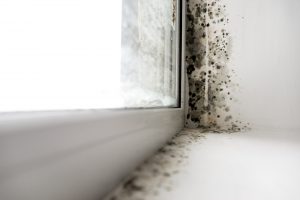Everything you need to know about damp in property
Guest Post by Aaron
Dampness within a property can be very worrying.
If left untreated, it can lead to structural issues and prolonged exposure can cause structural failings.
There are three main types of common damp problems; Condensation, Rising damp, and Penetrating damp.
Condensation
This is the most common damp problem of them all, and it’s the easiest to spot.
Look out for mould, most commonly in wet areas like the bathroom and be aware of ceilings and corners close to water that do not see much sunlight.
Ventilation problems can also attack tightly fitted laminated flooring and lead to dry rot.
The solution could just be extra vents or extractor fans, but in other cases you may need more wall insulation.
Rising damp
 The clue is in the name for this one, it starts below your flooring and then spreads upwards.
The clue is in the name for this one, it starts below your flooring and then spreads upwards.
The damp leaves patches as it climbs up the walls.
The problem could be a faulty pipe near the bottom of the wall, or a badly draining path, which is causing water to be collected.
Penetrating damp
Tell-tale signs of penetrating damp are fungi on the walls and crumbling plaster.
All sorts of home disasters could be to blame for this type of damp, from roof tiles coming loose to windows not being fitted correctly.
If you have a cellar/ underground garage, you may need special cement sealant treatment which stops damp from making the outside to inside switch.
If you don’t have a cellar and have penetrating damp, you may need new guttering.
It all depends on how the water is entering your home.
Solutions
Here are some solutions you may find useful if you have damp or want to avoid causing damp as much as possible.
If you constantly have to wipe condensation from your windows or notice wet patches at the top or bottom of your walls, you may need to improve the air quality and water structure in your home.
Short term fixes
Some short term fixes to dampness are; ensuring that any washing machine or tumble dryer in your property is ventilated properly.
From just one load of washing, two litres of water is emitted into the air.
If it is possible, try your best to dry clothes outdoors to prevent excess moisture escaping into your property.
If you have no choice but to dry clothes in the home, open doors and windows in the rooms the wet clothes are in.
If you are either cooking, boiling the kettle, taking a shower or running a bath, make sure that your kitchen or bathroom doors are kept closed to prevent the steam from going into colder rooms.
Cover your pans when cooking with a lid to reduce moisture and ensure that you have an extractor fan. Leave it on for 15-20 minutes after cooking to help clear the air.
Try not to overfill your bedroom wardrobes and kitchen cupboards.
A lack of ventilation and trapped warm air are a breeding ground for mould as the air is not able to circulate freely inside.
Also, make sure that your furniture is around 50mm away from the surrounding walls so that air can move around your property.
Long term fixes
Double glazing and loft insulation will help to reduce the amount of heat that is lost from a property.
An adequate amount of heating in your property will improve the internal temperature of surfaces in the house and reduce the likeliness of damp.
Installing insulation will help to keep the temperature of the surfaces inside your property high.
You can also install energy efficient extractor fans in your kitchen and bathroom to improve humidity levels.
Adequate ventilation is essential to allow the moisture to escape from a property before it turns into condensation or causes dampness.
The other option is to employ someone to damp proof your home.
Depending on the cause of the damp, different methods and approaches to resolve and avoid it can be taken.
The surveyors will diagnose the scale of the problem and immediate ventilation will help remove the damp although in some cases, plastering and timber removal or replacement may be necessary.